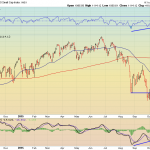Posted By: WisdomTree
When I see headlines along the lines of “Fixed income exchange-traded funds (ETFs) are not liquid and pose a risk to the system!” I can’t help but think, Stop the madness! Fixed income ETFs can actually add liquidity to the overall ecosystem and could potentially protect investors better than traditional investment structures. Fixed income ETFs have also become a reliable source for real-time pricing in an asset class where the last trade is not always reported or easily known by market participants. That being said, should there be stress in the bond market, many holders of the asset class will be affected in NAV terms, regardless of whether they are invested in individual bonds, mutual funds, closed-end funds or ETFs1. But before you take the headlines at face value, remember these five points when thinking about using an ETF for your fixed income investments:
1. Fixed Income ETFs Can Add Liquidity: Through secondary market trading, another layer of liquidity is added to the ETF ecosystem. Natural buyers and sellers can be paired off in the secondary market without having any transactions occur in the primary bond market. If secondary market trades are not matched by natural buyers and sellers, then a market maker is most likely providing liquidity on the other side of the trade. A market maker also does not necessarily need to transact in the underlying bonds to hedge their position. The ETF ecosystem affords market participants the ability to use highly correlated vehicles other than the underlying bonds themselves to potentially hedge their ETF positions. Some of these hedges include other ETFs and derivatives such as futures and credit default swaps. These added layers of liquidity via the exchange or correlated securities are unique to the ETF structure and can help soften the blow of any selling pressure in the fund.
2. There Is No Forced Selling: All ETFs have an authorized participant (AP) that sits between the fund company and the investor when assets are moved into or out of the fund. This is particularly important when it comes to fixed income ETFs, as the AP is not forced to redeem ETF shares on the exact day a trade has occurred. Rather, they can hold their position and go through the redemption process when they feel they can sell the underlying bonds in the marketplace for more than they purchased the ETF shares (plus any costs to them). In fact, studies show that only $1 of every $5 in fixed income ETF volume leads to a transaction in the primary market.2 In mutual funds, however, the portfolio manager may have to sell assets in the fund to raise cash when redemption orders are placed, thus forcing the fund to dump bonds on the market when it may not be most advantageous. We previously discussed the basic differences between ETFs and mutual funds, here.















Leave A Comment